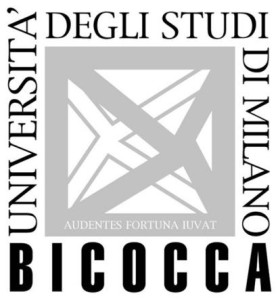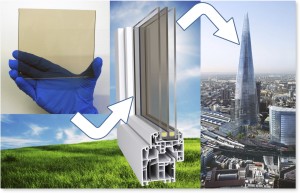published on Management Innovation Newsletter n. 19
Luminescent solar concentrators (LSCs) consist of semitransparent plastic slabs doped with highly emissive chromophores which, upon absorption of the sunlight, emit long-wavelength photons. This luminescence is guided by total internal reflection to the device edges, where it is converted into electricity by conventional PV cells installed along the slab perimeter. Thanks to their easy integration into active architectural elements, LSCs are considered one of the most promising complement for the achievement of near zero-energy balance buildings in highly-populated urban areas, where rooftop surfaces are insufficient for collecting all the energy required for the building operations. However, re-absorption losses and a partial coverage of the solar radiation prevent the realization of large-area devices required for real-world applications.
Recently (*), we improved the LSC technology by using wavefunction-engineered colloidal quantum dots (QDs) as active chromophores in which two distinct elements of the nanostructure serve independently as light-harvesting antenna and as low-energy emitter, allowing us to tune the energy separation between the absorption and emission spectra.
In particular we synthesized non toxic QDs of ternary I–III–VI2 semiconductors which provide suppressed re-absorption losses and an extended absorption spectrum. High-optical quality QD–polymer nanocomposites were obtained by incorporating CuInSexS2−x into photo-polymerized poly-acrylate slabs to produce 150 cm2 square LSCs that, despite an average transparency of 80% across the visible spectrum, provided an unmatched optical-power conversion efficiency as high as 3.2% under AM 1.5 global illumination. Importantly, Monte-Carlo ray tracing simulations indicate that, using QDs with an optimized photoluminescence quantum yield of 100%, the LSC performances do not severely degrade for linear dimensions as large as one meter. Another advantage of our LSCs is that they are essentially colorless, which is a key requirement for their application to building-integrated photovoltaics. A complete colorimetric characterization demonstrated that our LSC behave as dark-brownish sunglass lenses and do not introduce relevant distortion of the transmitted light nor modifications to the indoor-to-outdoor chromatic perception.
In conclusion, we demonstrated that it is possible to use stable and environmentally friendly QD for producing large-area LSC with suitable conversion efficiencies. The realized prototypes will now be integrated in photovoltaic windows for the field tests.
Collaboration protocols between the University of Milan Bicocca and Management Innovation are being defined to ensure that this exciting research becomes an important industrial initiative. We will keep you informed in the coming months … Stay tuned!
(*) Nature Photonics, 8, 392–399 (2014)
Nature Nanotechnology 10, 878–885 (2015)


